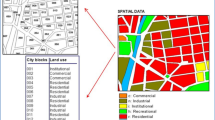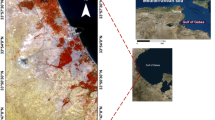Abstract
In order to corroborate the acquired knowledge of the human expert with the use of computational systems in the context of agrocomputing, this work presents a novel classification method for mining agrometeorological remote sensing data and its implementation to identify sugarcane fields, by analyzing Normalized Difference Vegetation Index (NDVI) series. The proposed method, called RAMiner (R ule-based A ssociative classifier Miner ) creates a learning model from sets of mined association rules and employs the rules to constructs an associative classifier. RAMiner was proposed to deal with low spatial resolution image datasets, provided by two sensors/satellites (AVHRR/NOAA and MODIS/Terra). The proposal employs a two-ways classification step for the new data: Considers the conviction value and the conviction-based probability (a weighted accuracy formulated in this work). The results given were compared with others delivered by well-known classifiers, such as C4.5, zeroR, OneR, Naive Bayes, Random Forest and Support Vector Machine (SVM). RAMiner presented the highest accuracy (83.4%), attesting it is well-suited to mine remote sensing data.
Access this chapter
Tax calculation will be finalised at checkout
Purchases are for personal use only
Similar content being viewed by others
References
Mucherino, A., Papajorgji, P., & Pardalos, P. M. (2009). Data mining in agriculture. New York: Springer.
Michalski, R. S., & Chilausky, R. L. (1980). Learning by being told and learning from examples: An experimental comparison of the two methods of knowledge acquisition in the context of develo** an expert system for soybean disease diagnosis. International Journal of Policy Analysis and Information System, 4, 125–161.
Bhatia, J., & Gupta, A. (2014). Mining of quantitative association rules in agricultural data warehouse: A road map. IJISIS, 3, 187–198.
Ramesh, V., & Ramar, K. (2011). Classification of agricultural land soils: A data mining approach. Agricultural Journal, 6, 82–86.
Verheyen, K., & Hermy, M. (2001). The relative importance of dispersal limitation of vascular plants in secondary forest succession in Muizen forest. Journal of Ecology, 89, 829–840.
Brudzewski, K., Osowski, S., & Markiewicz, T. (2004). Classification of milk by means of an electronic nose and SVM neural network. Sens Actuators, 98, 291–298.
Fagerlund, S. (2007). Bird species recognition using support vector machines. Signal Processing, 38637, 8.
Brudzewski, K., Osowski, S., & Markiewicz, T. (1998). Satellite remote sensing for forestry planning: A review. Scandinavian Journal of Forest Research, 13, 90–110.
Das, K. C., & Evans, M. D. (1992). Detecting fertility of hatching eggs using machine vision II: Neural network classifiers. Transactions of the ASAE. American Society of Agricultural Engineers, 35, 2035–204.
Karimi, Y., Prasher, S. O., Patel, R. M., & Kim, S. H. (2006). Application of support vector machine technology for weed and nitrogen stress detection in corn. Computer Electronics Agriculture, 51, 99–109.
Patel, V. C., McClendon, R. W., & Goodrum, J. W. (1994). Crack detection in eggs using computer vision and neural networks. Artificial Intelligence Applications, 8, 21–31.
Agrawal, R., & Srikant, R. (1994). Fast algorithms for mining association rules in large databases. In Proceedings of the 20th International Conference on Very Large Data Bases, VLDB, Santiago (pp. 487–499).
Author information
Authors and Affiliations
Corresponding author
Editor information
Editors and Affiliations
Rights and permissions
Copyright information
© 2018 Springer International Publishing AG
About this paper
Cite this paper
João, R.S., Mpinda, S.T.A., Vieira, A.P.B., João, R.S., Romani, L.A.S., Ribeiro, M.X. (2018). A New Approach to Classify Sugarcane Fields Based on Association Rules. In: Latifi, S. (eds) Information Technology - New Generations. Advances in Intelligent Systems and Computing, vol 558. Springer, Cham. https://doi.org/10.1007/978-3-319-54978-1_61
Download citation
DOI: https://doi.org/10.1007/978-3-319-54978-1_61
Published:
Publisher Name: Springer, Cham
Print ISBN: 978-3-319-54977-4
Online ISBN: 978-3-319-54978-1
eBook Packages: EngineeringEngineering (R0)




